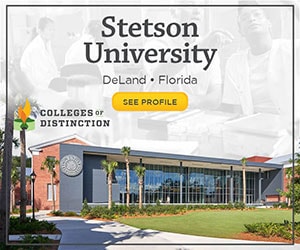Want Your Kids to Have a Secure Future? Invest in a Liberal Arts Education
It’s no secret that the dynamics surrounding higher education and postgraduate employment are changing fast these days, and it’s no question that our interconnected world is also evolving rapidly. These changes, fueled by technology, politics, and economics, affects the way we learn, work, play, and connect to one another. It’s exactly for these reasons that there is no better time to invest in a liberal arts education.
In the world that awaits future graduates, the competitive edge belongs to those with bright, curious, and agile minds. Objective, technological, or scientific knowledge will no longer be enough; the world you or your child will enter after college is already demanding more human-centric solutions to our collective challenges. With this in mind, here are just a few reasons why a liberal arts education is so valuable.
Global Trends
All facets of today’s world are bound across borders through digital networks. News can spread in an instant, change is constant, and the future is sure only to become increasingly complex. New technologies, like self-driving cars and 3D printing, are already disrupting the way we work and do business.
The leaders of the future, therefore, will have to apply novel theories and think across disciplines in order to tackle the challenges of the 21st century. They will be individuals who can think differently and challenge the status quo. They will have keen observations, explore new possibilities, and make new and surprising connections.
The goal of liberal arts colleges and universities is to cultivate the kind of innovative thought needed for such new and challenging demands. Though each school’s mission is slightly different, most aim to produce leaders who make thoughtful life choices, succeed professionally, and commit themselves to lifelong learning and cultural understanding. With a student-centered focus, these schools engage their students with a wide variety of learning experiences, better preparing them for the challenges of our time.
Employer Trends
“I personally think there’s going to be a greater demand in 10 years for liberal arts majors than there were for programming majors and maybe even engineering…”
-Billionaire Investor, Mark Cuban
The needs and demands of employers definitely reflect the global trends of workforce demands. According to the 2016 Job Outlook survey conducted by the National Association of Colleges and Employers, hiring personnel increasingly value and prioritize the skills that are inherently developed in liberal arts institutions. Of those polled:
- 80.1% seek candidates with good leadership skills
- 78.9% want graduates with the ability to work in a team
- 70.2% need employees with good written communication skills
- 70.2% look for workers with good problem-solving skills
- 68.9% prioritize employees’ excellent verbal communication skills
Liberal arts graduates have the clear advantage here. Many of their schools implement programs that promote active collaboration between students of different disciplines, and others are challenged with capstone courses and projects to demonstrate their mastery of a subject. They’ve also been steeped in writing-intensive courses to develop their communication skills, and they have improved their ability to discern context and solve problems through humanities courses like history or philosophy. To students and employers alike, the benefits of learning and thinking across disciplines is invaluable.
Leading businesses are taking notice of these facts. Last year, Forbes published an article explaining why companies like Slack and Ubisoft value their employees’ humanities degrees as well as why some American entrepreneurs have chosen to major in philosophy. It is truly apparent that companies need more than technology to gain the competitive edge they seek.
To connect, engage, and to sell to clients, today’s employers must build bridges between technology and humanity. Their products must relate their target audiences’ histories, cultures, languages, and values. In essence, such an ability to make connections like these is what a liberal arts education is all about.
Academic Trends
Hong Kong, Japan, and other Asian countries are in the process of adopting the United States’ liberal arts model. In a recent article in The Atlantic, businessman Po Chung and other education reformers have acknowledge that “it’s past time for (Asian) colleges to introduce a broader range of subjects, to promote greater intellectual curiosity, and to foster creative thinking.” Chung and other backers appear to echo the insights of their Silicon Valley counterparts. They, too, are “convinced that these changes will, in turn, build a workforce of rigorous, creative thinkers—just what they think is needed to meet the fast-changing needs of a transforming global economy.”
Forward-thinking leaders are recognizing that the future of work and social well-being depend on human-centric solutions. Because of this fact, students who narrowly focus on technical skills are automatically limiting their future options. Unless they make connections, think outside the box, and market themselves more broadly, their professional skills will not withstand the ever-shifting demands of the professional world.
STEM and the Humanities
Tensions are growing around the humanities in western academia. Citing a shortage of scientists and engineers, some have been framing the humanities as an ‘unnecessary indulgence’ and pressuring students to hone in on STEM (Science, Mathematics, Engineering, and Technology) fields.
Countering this notion is computer science educator Valerie Barr, who adamantly defends the virtues of the arts and humanities and deems them essential to her field. She writes:
“…those who excel in STEM understand that there are non-technical considerations that should guide their work, and those who study humanities understand that there are powerful problem-solving mechanisms and tools that can open up new avenues of application for their knowledge. We need those with strength in the humanities to feel comfortable talking with those who have strength in STEM, and vice versa. This isn’t either-or, we have to expose students to both.”
While Barr’s view is insightful, it hardly begins to settle the debate. More emerging studies have suggested that there is far more to the humanities than its detractors claim. While its benefits may not be immediately obvious, the arts and humanities are far more than a simple “indulgence;” rather, they are a necessity.
Leadership
Leadership, though hard to define, is understandably at the top of employers’ wishlists. The kinds of leaders who are sought by hiring managers are to be empathetic visionaries. They are expected know how to collaborate with a group and guide them through to the end of projects. In contrast, however, the available applicants often end up being the kind of people who look to their superiors to give them the “right answers” without making a real effort to find their own appropriate solutions. These average job-seekers tend to be better trained in rote memorization, not the more subtle, interpersonal, and agile thinking skills that define leaders.
This is where the value of a liberal arts degree becomes clearer. New data suggests that the smaller class sizes and unique programs of liberal arts colleges and universities cultivate the leadership qualities sought by employers. In a recent study, graduates were shown to be 25-45% more likely to become leaders in their localities or professions if they had talked with faculty members about academic and nonacademic subjects outside of the classroom. When their discussions had included peace, justice, and human rights, those numbers jump to 27-52%. In this light, liberal arts degrees become true assets to a job market that favors leaders.
| Field of study | Leadership Skill Gained |
| English | Writing and Communication |
| History | Perspective |
| Philosophy | Logical Thinking |
| Literature | Critical Thinking |
| Culture | Understanding Audiences |
| Arts | Creativity |
Earning Potential
There is a common belief that liberal arts graduates earn less than others; however, research finds that this is only true for the first few years after graduation. In fact, a recent study finds a high correlation between a broad undergraduate education and financial success. Those who take the arts and humanities in addition to their main field of study are 31-72% more likely than others to have higher-level positions and earn more than $100,000. This should come as no surprise to us at this point, as the arts and humanities cultivate the kinds of skills that make it easier to rise through positions in business.
Putting the Myth of “Worthless Degrees” to Rest
Tomorrow’s challenges call for creative, collaborative workers to reinvigorate and reshape our social and educational structures as well as our business models. To do so, students need rich, diverse educational opportunities to open and expand their minds.
The striking value of a liberal arts education comes from the way it enable students to think through various challenges, contradictions, and tensions. It helps them recognize that the only change worth working for is one that always keeps sight of humanity.
That’s why a liberal arts education is a necessity in today’s world: our shared humanity requires thoughtful leadership that considers the well-being and progress of all. That’s why it’s time to put the myth of “worthless degrees” to rest.






